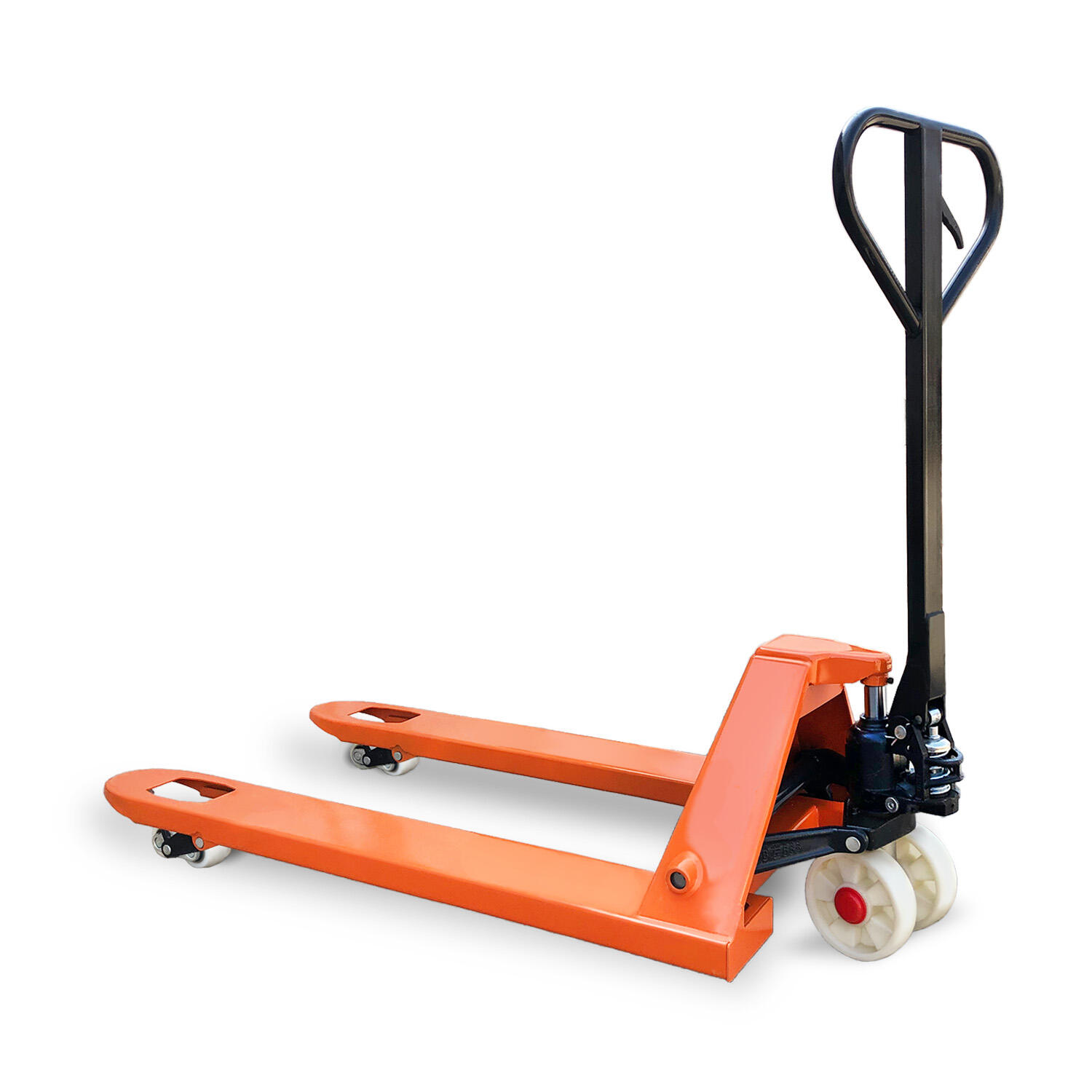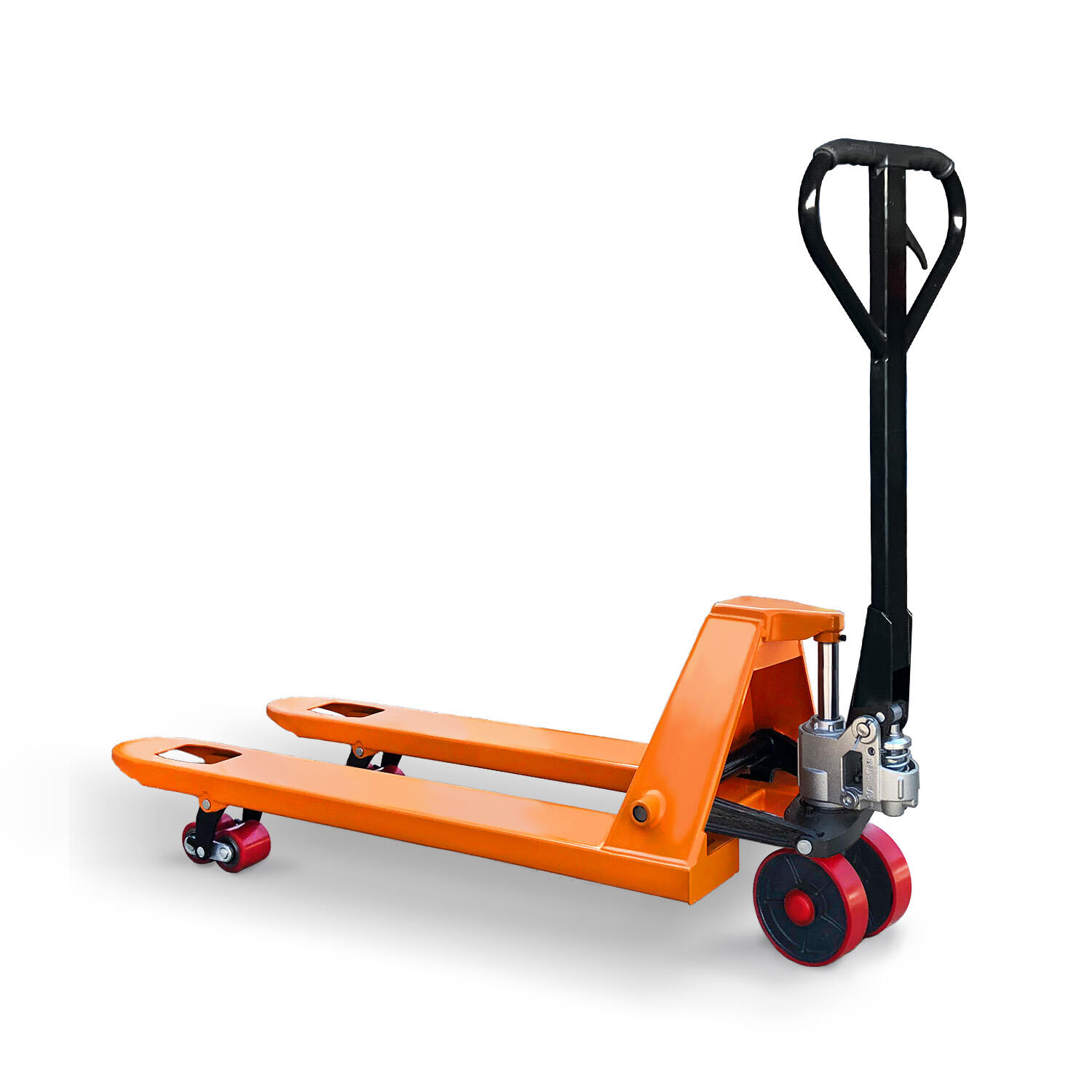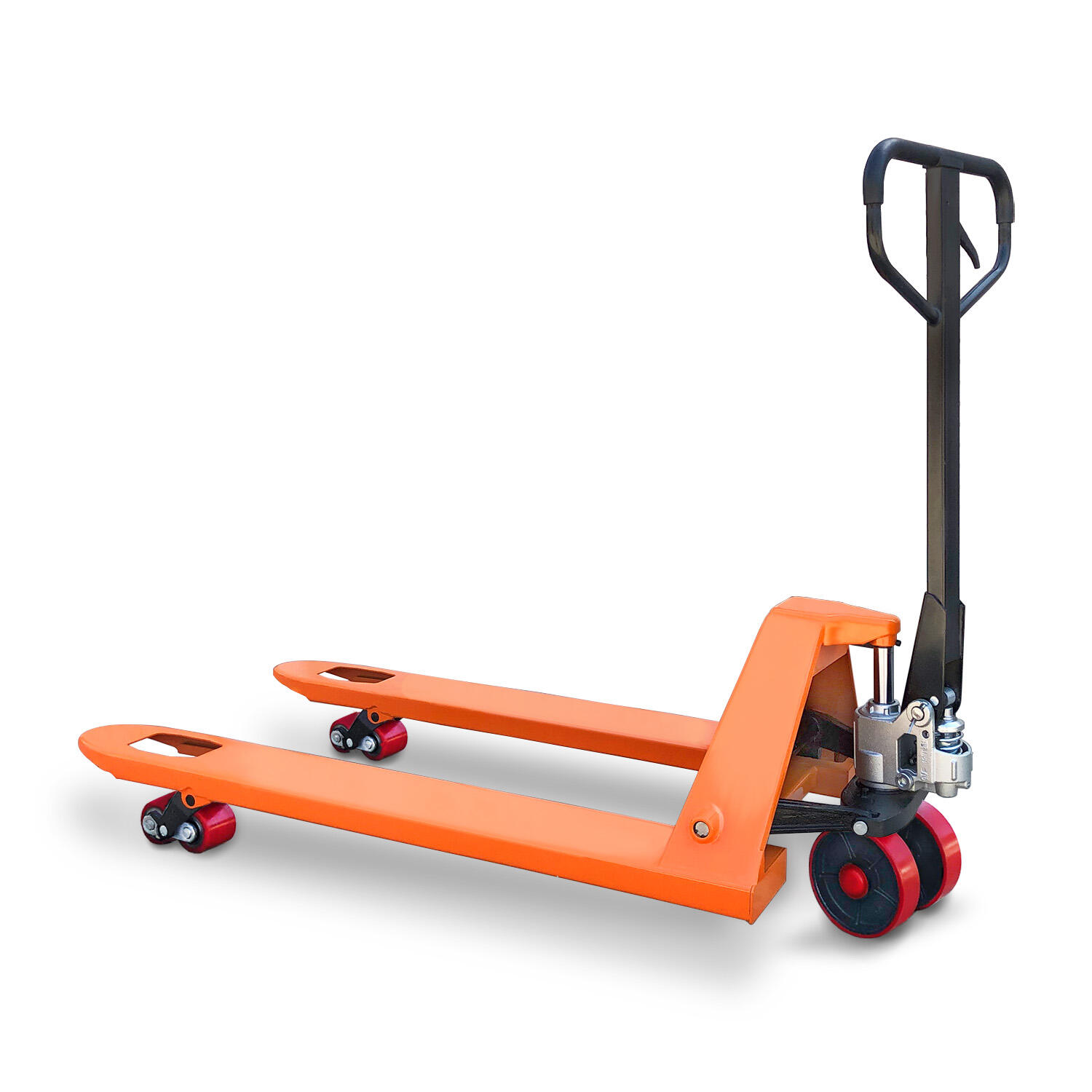ידית הורדה הידנית היא ציוד מיוחד לטיפול בחומרים שנועד להרים פאלאטים לגבהים גדולים יותר ממכונות הורדה סטנדרטיות, תוך מתן גמישות מוגדלת באתרים תעשייתיים ומסחריים מגוונים. הכלי הזה תוכנן כדי לשלב את הפשטות של הפעלה ידנית עם היכולת להגיע לגבהים מוגזמים, מה שהופך אותו לאידיאלי למשימות כמו איסור פאלאטים, טעינה על מדפים גבוהים, או העברת סחורות לפניות משטחים מוגזמים כמו מיטות משאיות או מדרכות ביניים. הבנייה החזקה והמנוע היעיל הופכים אותו למטלה חשובה במחסנים, מרכזי הפצה, חדרי מלאי קמעונאיים ומפעלים ייצוריים, כאשר מטרת מקסום שטח האחסון וتحسين היעילות התפעולית הן בעלות עדיפות גבוהה. המאפיין המובהק של ידית הורדה הידנית הוא טווח ההרמה המורחב. בעוד שמכונות הורדה רגילות מרימות פאלאטים בכמה סנטימטרים מהקרקע, דגם ידית הורדה מוגזמת יכול להרים מטענים לגבהים בין 30 ס"מ ועד מעל מטר אחד, תלוי בעיצוב הספציפי. היכולת המוגדלת הזו להרים מאפשרת לעסקים לנצל את שטח האחסון האנכי בצורה יעילה יותר, ומצמצמת את הדרישה לשטחי אחסון אופקיים גדולים, תוך איפשור ארגון יעיל יותר של המלאי. בין אם אתה צריך לאסף פאלאטים במערכת מדשפות במחסן, להניח סחורות על מדפים גבוהים בחנות קמעונאית, או לטעון פריטים על מיטת משאית מוגזמת, ידית הורדה הידנית מספקת את הגובה הדרוש להשלמת המשימות האלה בקלות. הבנייה של ידית הורדה הידנית מתבססת על עמידות כעיקרון מרכזי, והיא כוללת שלד פליז כבד שיכול לעמוד בקשי הפעלה יומית. השיניים עשויה מפליז עבה וחזק, ותוכננו כדי לתמוך במטאנים כבדים - לרוב בין 1,000 ק"ג ל-2,000 ק"ג - מבלי להתחנן או להתפתל. מנגנון ההרמה הוא שילוב של משאבה ידנית ומערכת הידראולית, שפועלת יחד כדי להרים את השיניים בצורה חלקה ושויה. הגליל ההידראולי חסום למניעת דליפות ומבטיח ביצועים עקביים, בעוד שהמשאבה הידנית עוצבה כך שתדרוש מאמץ מינימלי, ותאפשר לעובדים להרים מטענים כבדים ללא מאמץ פיזי מוגזם. מערכת ההרמה היעילה הזו מבטיחה שגם בעת הורדת מטענים לגובה המקסימלי, הפעולה תישאר בת קנה מידה ומבוקרת. ארגונומיקה משחקת תפקיד מרכזי בעיצוב ידית הורדה הידנית, תוך איזון בין נוחות ובטיחות לעובדים לאורך תקופות ארוכות. המנעול עוצב בצורה ארגונומית עם אחיזה אנטי-חלקה, תוך הפחתת עייפות וסיפוק שליטה טובה יותר במהלך הפעלה. הוא ממוקם בגובה שמאפשר לעובדים לעמוד בפוקסיה טבעית ועומדת בזמן משאבה והיגוי, ומצמצמת את הסיכון לפגיעות בגב, כתפיים וקרסוליים. דגמים מסוימים מצוידים במנגנון משאבה דו-שלבי, שמאפשר הרמה מהירה של מטענים קלים יותר והרמה מבוקרת של מטענים כבדים יותר, תוך הפחתת מאמץ הработנים. בנוסף, המנעול כולל לרוב בקרים מובנים להורדת השיניים, מה שמאפשר לשלוט בגובה בקלות מבלי להרפות מהאחיזה, ומשפר את היעילות והבטיחות. ניידות היא יתרון נוסף של ידית הורדה הידנית. למרות היכולת שלה להרים לגבהים מוגזמים, היא נשארת קומפקטית וזריזה, ויכולה לנווט בקלות דרך אזורים צרים, פינות קשות ומרחבים עמוסים. הגלגלים הקדמיים הם לרוב גלגלים סיבובים, שמאפשרים ניידות מצוינת ומאפשרים מיקום מדויק של השיניים מתחת לפאלאטים. הגלגלים האחוריים גדולים וקבועים, ומספקים יציבות כאשר הידית מתרוממת או תועבר מטענים כבדים. הגלגלים לרוב עשויים מפוליאוריתן באיכות גבוהה, שמאפשרת נסיעה חלקה על פני משטחים שונים - כולל בטון, ריצוף ואספלט - תוך הפחתת רעש ומניעת נזקי רצפות, מה שהופך אותה למתאימה לשימוש בסביבות רגישות לרעש כמו חנויות קמעונאיות. ביטחון הוא בעדיפות ראשונה בעיצוב ידית הורדה הידנית, עם מספר תכונות המשולבות כדי להגן על הработנים, למנוע תאונות ולוודא טיפול בטוח במטאנים. אחת מהתכונות הביטחוניות הקריטיות היא שסתום הגנה מפני עומס, שמונע מהידית להרים מטענים שעוברים את הקיבולת המוצהרת שלה, תוך הגנה מפני נזקי מבנה ופגיעות פוטנציאליות. מנגנון הירידה תוכנן כדי לשלוט בירידה השיניים בצורה איטית ושויה, תוך prevnting of sudden drops that could damage the load or cause the jack to tip. Many models also include a parking brake, which can be engaged to secure the jack in place when loading, unloading, or stacking, preventing unintended movement. Additionally, the forks are equipped with safety lips or stops to ensure that the pallet remains securely positioned during lifting and transportation, reducing the risk of loads slipping off. Maintenance of a manual high lift pallet jack is straightforward, ensuring long-term reliability and performance. Regular maintenance tasks include checking the hydraulic fluid levels and topping up as needed, inspecting the hydraulic hoses and seals for signs of leaks, and lubricating moving parts such as the wheel bearings, pivot points, and pump mechanism. The forks should be inspected regularly for signs of wear, bending, or damage, and any issues should be addressed promptly to maintain their load-bearing capacity. Cleaning the jack regularly to remove dirt, debris, and moisture helps prevent rust and corrosion, preserving the integrity of the steel components. Unlike electric models, there are no complex electrical systems or batteries to maintain, reducing the need for specialized tools or professional servicing and minimizing downtime. The versatility of a manual high lift pallet jack extends to its ability to handle various types of pallets and loads. It can be used with standard wooden pallets, plastic pallets, metal pallets, and even skids, making it suitable for a wide range of industries. In warehouses, it is used to stack pallets in racking systems, maximizing vertical storage space and improving inventory management. In retail settings, it helps with restocking high shelves, reducing the need for ladders or scaffolding and improving efficiency. In manufacturing facilities, it is used to transfer materials between different stages of production, where elevated work surfaces are required. It is also useful for loading and unloading trucks, as it can raise pallets to the height of the truck bed, simplifying the transfer process and reducing the risk of injury from manual lifting. Cost-effectiveness is another significant advantage of a manual high lift pallet jack. Compared to electric high lift pallet jacks, it is more affordable to purchase and operate, making it an attractive option for small to medium-sized businesses with limited budgets. It does not require electricity or batteries, ensuring that it can be used in any location—even in areas without power access—and eliminating the need for charging downtime. This makes it a reliable tool that can be used continuously throughout the workday, improving productivity and reducing operational costs. In summary, a manual high lift pallet jack is a versatile, durable, and efficient solution for businesses looking to enhance their material handling capabilities. Its extended lifting range, robust construction, ergonomic design, and safety features make it ideal for a wide range of applications, from stacking pallets in warehouses to loading elevated surfaces in retail and manufacturing settings. By providing the ability to reach greater heights with manual operation, it offers a cost-effective way to maximize storage space, improve operational efficiency, and ensure workplace safety. Whether you are a small business or a large industrial facility, a manual high lift pallet jack is an indispensable tool that can help meet your material handling needs and drive productivity.


